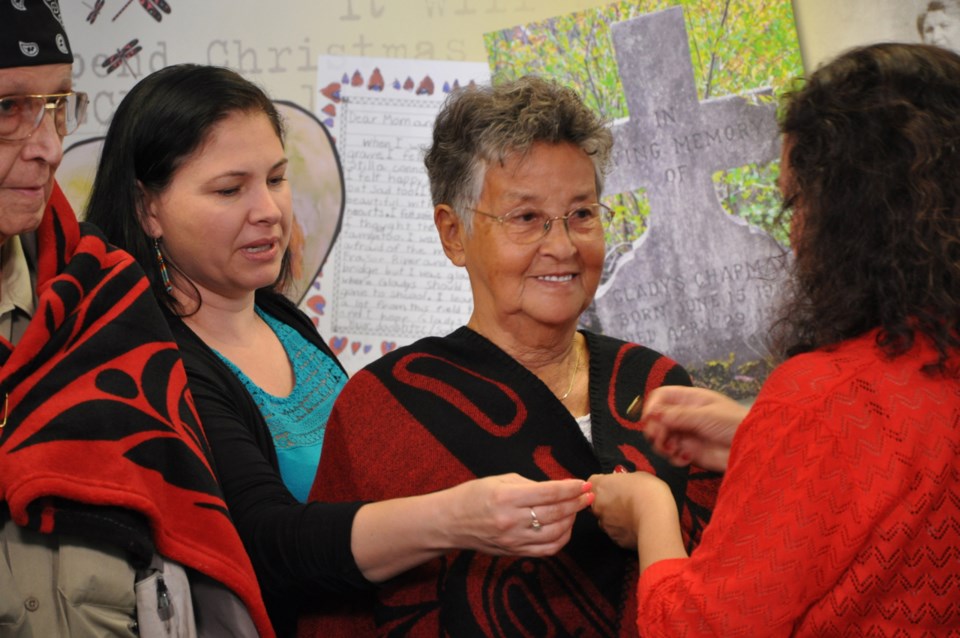Gladys Chapman was just 12 years old when she died.
The young girl from B.C.’s Spuzzum First Nation was taken from her parents and sent to Kamloops Indian Residential School in 1926 when she was seven.
The school was 250 kilometres away from home and the kids sometimes didn’t even get to see their families at Christmas. Each child got an identical haircut and was assigned a number.
Five years after arriving at residential school, Gladys died from tuberculosis, a not uncommon fate in residential school, where diseases spread because of poor nutrition, crowded conditions and poor sanitation and ventilation.
Gladys’s story is central to a new lesson plan created by the B.C. Teachers’ Federation’s Aboriginal Education Program, with help from some of Gladys’s family members, including two who are teachers. The lessons include primary source documents, games, activities, stories and other material that teachers can use to teach students about the harsh history of residential school.
This type of resource gives teachers a tool to educate students about Aboriginal history and culture, which is now part of B.C.’s new curriculum and was recommended in the Truth and Reconciliation Commission’s 2015 calls to action.
The TRC has said “education is the key to reconciliation” and has specifically called for students to learn about the history of residential schools.
Why is this important? It’s important on many levels — first, because all citizens of B.C. should know this history and second, because a resource such as this helps foster Aboriginal students’ sense of pride and belonging.
Aboriginal students struggle in school more often than non-Aboriginal students.
The statistics are there in black and white: a drastically smaller percentage of Aboriginal students graduate than non-Aboriginal students, more have special needs, fewer progress to post-secondary education and they don’t do as well on provincial tests.
“B.C. still has a long way to go. There is a persistent gap in graduation rates and other measures of success for Aboriginal learners compared to non-Aboriginal peers,” said BCTF president Glen Hansman when the curriculum was released. “The compelling story of Gladys Chapman’s short life and tragic death is one that will resonate in classrooms throughout our province. As our students forge heartfelt personal connections to Gladys; that’s when the deep learning takes place and we can move together to a place of empathy and reconciliation.”
Carol Bellringer, B.C.’s auditor general, said in a 2015 report about the achievement gap that there is “a racism of low expectations” for B.C.’s Aboriginal students.
In Vancouver, the statistics are also dire: in 2015-2016, just 48 per cent of Aboriginal students graduated, compared to 90 per cent of non-Aboriginal students.
That’s not for lack of trying. The Vancouver School Board has an Aboriginal Enhancement Agreement in place, designed to support more Aboriginal students to graduate, to improve their sense of belonging in school and to develop a better understanding of Aboriginal cultures for all students. Since the agreement has been in place, results have been getting slightly better for First Nations students, but there is still much work that must be done.
Some of the things the VSB has put in place to improve the experience for Aboriginal students include the Aboriginal Focus School at Macdonald elementary, which may soon be renamed either Cedar or Cedar Cove elementary. Thunderbird elementary also has plans to add an Aboriginal translation to its name.
The district also hired an Aboriginal elder in 2015 and has held a district-wide Grade 7 graduation ceremony. Aboriginal cultural celebrations are now held throughout the district, the agreement says.
The VSB is also tracking Aboriginal students, through things such as their attendance, connectedness to adults, post-secondary transitions and graduation rates. While these are all steps in the right direction, another part of the agreement is a goal to have all schools incorporating Aboriginal histories, traditions and cultures into their learning environment.
That’s a tough ask, because in order to do so, teachers must know what they’re talking about — they need to be familiar themselves with Aboriginal culture and traditions. Not only that, but they need to teach about residential schools, a subject they probably did not learn about in school themselves.
That’s where Gladys’s story comes in. The resource — which includes elements that are hopeful and inspiring — will start a conversation that’s desperately needed.



